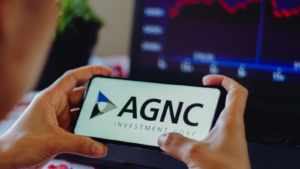
When looking for stocks with high yields, business development companies (BDCs) and mortgage real estate investment trusts (REITs) stand out as potential options. These sectors often have high dividend yields. However, high yields often come with risks. Investors need to assess their own risk tolerance. In this article, I will cover some Nasdaq stocks in both of these sectors.
BDCs earn interest income by investing in small to mid-sized businesses. Mortgage REITs invest in mortgages and mortgage-backed securities. These investments will earn the company interest. Both of these sectors come with high yields. Because of the risky nature of high yields, investors need to understand these are securities best used for trading.
In the following article, I will discuss the trends and strategies within these two sectors. By looking at how mREITs and BDCs operate, investors can gain the insight needed to make more informed decisions. Let’s dive into the fundamentals and recent earnings reports in these high-yield sectors.
AGNC Investment (AGNC)

AGNC Investment (NASDAQ:AGNC) is a mortgage REIT. At recent prices, AGNC’s dividend is nearly 15%. When evaluating mortgage REITs, it’s important to look at the relationship between the book value and stock price.
To help investors understand the changes in book value, The REIT Forum prepared a short guide on mortgage REIT book values.
Understanding book value is essential. Book value is the value of assets minus debts. Mortgage REITs usually trade on a price-to-book ratio. That is the price divided by book value. AGNC’s book value for Q1 was reported at $8.84. AGNC’s stock price during Q1 was higher than the book value. Because the price was higher than the book value per share, AGNC would be considered to be trading at a premium.
The Q1 earnings release for AGNC was positive for book value. During Q1, AGNC maintained a defensive hedging coverage ratio of 99%. This is a good strategy for high or rising interest rates. However, a high hedging coverage ratio is not beneficial if rates decline quickly.
One of the flaws of AGNC and other mortgage REITs like Annaly Capital Management (NYSE:NLY), Chimera Investment Corporation (NYSE:CIM), and Orchid Island Capital (NYSE:ORC) is frequent dividend cuts. The income can go up in flames. Some investors may prefer a dividend champion, like Realty Income (NYSE:O). I won’t be covering Realty Income here because they are not one of the Nasdaq stocks. However, I have published a Realty Income FAQ for investors interested in dividend growth.
Golub Capital BDC (GBDC)

Golub Capital BDC (NASDAQ:GBDC) is a business development company. There are two fundamental components to analyzing BDCs. First, you want to understand the company’s net asset value (NAV). Second, you want to understand the company’s net interest income (NII). Net interest income is revenues less operational expenses (prior to valuation fluctuations).
BDCs generally have a high dividend, and GBDC is no exception. As of writing, its dividend yield was 9.96%. High yields go hand-in-hand with risk. Investors who hate risk shouldn’t be hunting for high yields. GBDC reported NAV at $15.12, a slight increase from the prior quarter at $15.03. This was about what I expected. Consensus estimates for EPS came in at $0.509. The company reported a slight beat at $0.510.
After the Q1 release, GBDC proposed a merger with one of its affiliates, Golub Capital BDC 3, also known as GBDC 3. It announced that the merger was complete in early June. This brings the company’s total assets to over $8 billion. One reason this merger is good for investors is that the portfolios are very similar. This should scale well when it comes to operating expenses.
GBDC is still pretty small for Nasdaq stocks. The market capitalization is about $4 billion.
SLR Investment (SLRC)

SLR Investment (NASDAQ:SLRC) is another BDC. Investors want to look at NAV and NII. SLRC had a good quarter in Q1, performing slightly better than expected.
My estimates for SLRC’s NAV came in at $17.95. For Q1, the company reported $18.19. The prior quarter’s NAV was $18.09. I would consider this a small outperformance. Investors in BDCs should be looking at the fair market value (FMV). The company’s FMV changes have been within expectations for the last several quarters. This means the underlying assets haven’t had any significant unexpected changes in value.
I projected SLRC’s earnings to be $0.420 for the first quarter of the year. The company reported $0.44 for its earnings. The prior quarter’s NII (or earnings) was $0.438. This is about 4% over what I expected. One of the reasons the company continues to do well is the acquisition of Kingsbridge Holdings in November 2020. SLRC declared a dividend of $0.41 for Q2. The dividend should remain unchanged for the remainder of this year.
SLRC is particularly small among Nasdaq stocks, with a market cap smaller than $1 billion.
On the date of publication, Michael VanLoon is LONG SLRC. The opinions expressed in this article are those of the writer, not subject to the InvestorPlace.com Publishing Guidelines.






